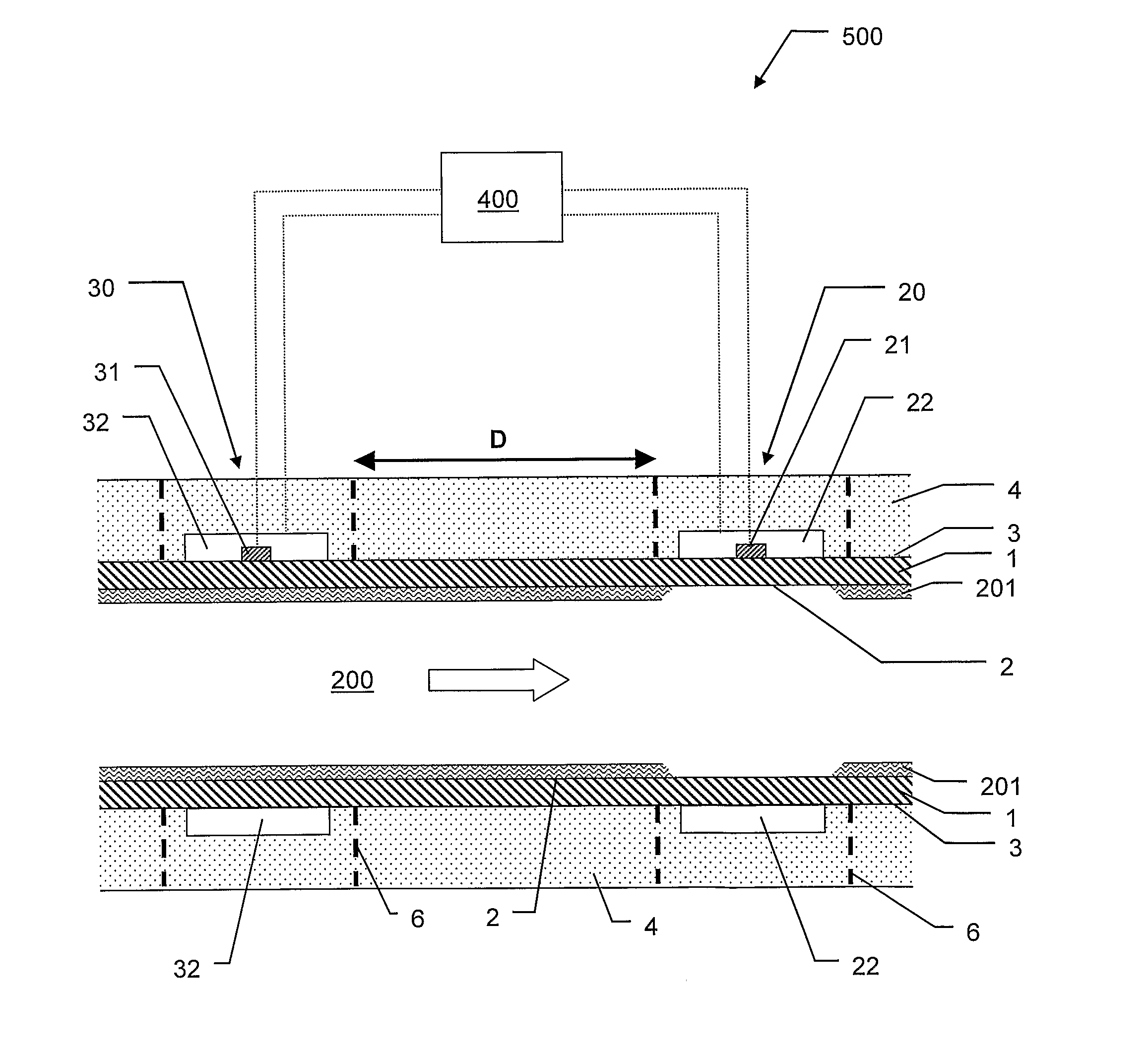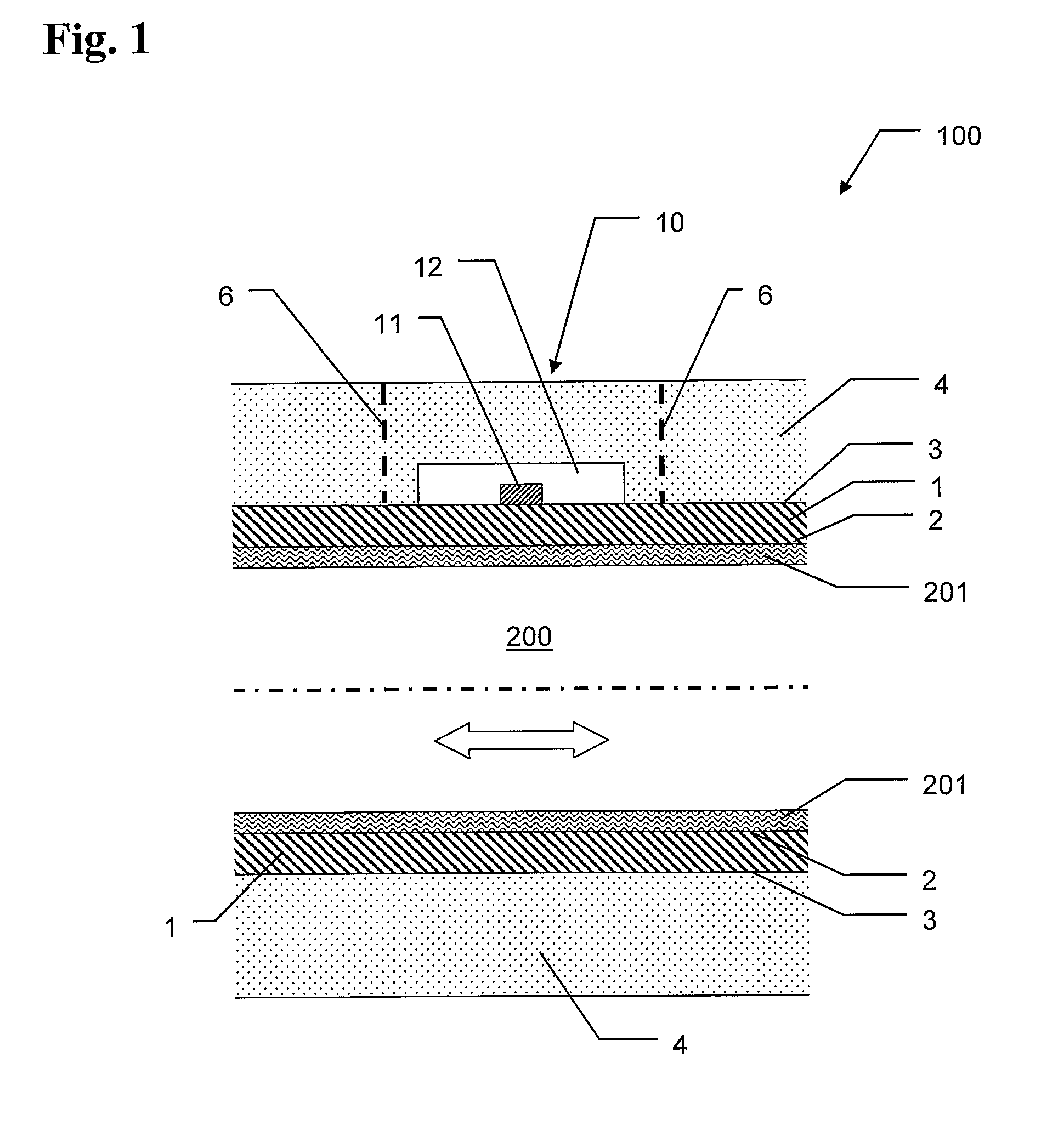Method and device for measuring deposit thickness
a technology of deposit thickness and measurement method, which is applied in the direction of material thermal analysis, cleaning process and apparatus, instruments, etc., can solve the problems of reducing the cross-sectional area of the pipeline, affecting the accuracy of the measurement method, so as to improve the wax thickness measurement method
- Summary
- Abstract
- Description
- Claims
- Application Information
AI Technical Summary
Benefits of technology
Problems solved by technology
Method used
Image
Examples
example 1
[0080]The following example shows a method for conducting a measurement with various deposit thicknesses, with reference to FIG. 3 and FIG. 4:
[0081]After a cleaning cycle at the first unit 20, comprising activation of the first heating element 22, heating the inside wall 2 of a pipeline above the wax appearance temperature, and cooling of the pipe wall 1 in the first section to the same temperature as that of the second section, the heat elements 22 and 23 are switched on from t=10 s to t=40 s with a constant electric power of 400 W.
[0082]This heating generates a linear rise of the measured temperature at the position of the heat sensors as seen in FIG. 3. When the heat elements are switched off, the generated heat will dissipate. Due to the insulating effect of the deposit this will take longer with growing deposit thickness. A certain measurement time t(measurement) is defined, preferably at a time where the spread between the temperature curves for minimum and maximum deposit thi...
example 2
[0085]In alternative arrangement of the present invention as illustrated in FIG. 5, several measurement units 20, 30, 40 and 50 of the type described above are arranged at different locations along the pipeline. Further, a central processing means 400 (e.g. a computer device) is provided, which central processing means is adapted to receive local wax layer thickness data from all the measurement devices.
[0086]By including additional units of the second type 30 such as device 50, local deposit thicknesses may be measured at different location, based on a central calibration of one unit of the first type 20. By including additional units of the first type 20 such as unit 40, the reference data and calibration of other first type units, such as unit 20 may be monitored and controlled against malfunction, which might have serious effects. In addition, such additional first type units could alternatively also be used as second type units after a cleaning of the pipeline, if desired. Firs...
PUM
 Login to View More
Login to View More Abstract
Description
Claims
Application Information
 Login to View More
Login to View More - R&D
- Intellectual Property
- Life Sciences
- Materials
- Tech Scout
- Unparalleled Data Quality
- Higher Quality Content
- 60% Fewer Hallucinations
Browse by: Latest US Patents, China's latest patents, Technical Efficacy Thesaurus, Application Domain, Technology Topic, Popular Technical Reports.
© 2025 PatSnap. All rights reserved.Legal|Privacy policy|Modern Slavery Act Transparency Statement|Sitemap|About US| Contact US: help@patsnap.com



